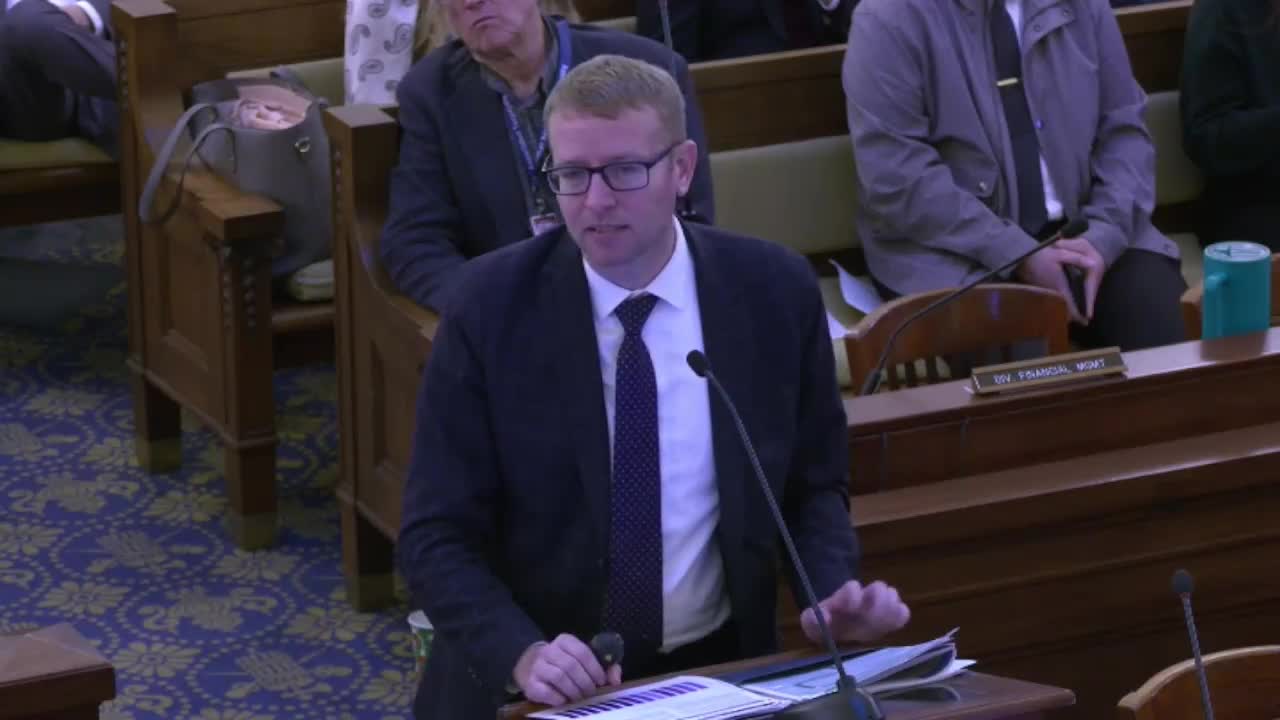Idaho officials address rising foster care crisis and push for prevention funding
November 20, 2024 | Appropriations, HOUSE OF REPRESENTATIVES, Committees, Legislative, Idaho
This article was created by AI summarizing key points discussed. AI makes mistakes, so for full details and context, please refer to the video of the full meeting. Please report any errors so we can fix them. Report an error »

The Idaho House Appropriations Committee convened on November 20, 2024, to address pressing issues within the state's child welfare system, focusing on the challenges of neglect cases and the impact of parental incarceration on child placements. The discussions highlighted the need for increased investment in prevention strategies to keep children safely in their homes, particularly in cases of neglect, which account for approximately 85% of custody entries.
Director Adams emphasized the importance of secondary prevention measures, noting that many children currently in the system could potentially remain at home with appropriate support. The committee acknowledged the long-term nature of these investments, especially in light of the ongoing crisis in foster care availability.
A significant point raised was the correlation between parental incarceration and child welfare involvement. It was reported that 15% of children entering the system have at least one incarcerated parent, raising concerns about the broader social implications of incarceration on family stability. The committee members expressed a desire to understand the extent of this issue and its impact on child placements.
The conversation also touched on the effects of the Family First Act of 2018, which has created barriers to federal funding for residential treatment facilities. This has resulted in a decrease in available foster families and an increase in the reliance on congregate care settings. Director Adams noted that the number of children in congregate care has stabilized around 200, down from a peak of 268, thanks in part to legislative efforts aimed at reducing reliance on such placements.
The committee recognized the importance of keeping children within the state for care, as this not only reduces costs but also increases the likelihood of family reunification. The discussions underscored a collaborative effort between the legislature and the Department of Health and Welfare to address these challenges, with a focus on improving outcomes for children and families involved in the system.
As the meeting concluded, the committee members expressed a commitment to continue exploring solutions to enhance the child welfare system, particularly in the areas of prevention and support for families facing neglect and instability. The ongoing dialogue reflects a growing awareness of the complexities surrounding child welfare and the need for comprehensive strategies to address these critical issues.
Director Adams emphasized the importance of secondary prevention measures, noting that many children currently in the system could potentially remain at home with appropriate support. The committee acknowledged the long-term nature of these investments, especially in light of the ongoing crisis in foster care availability.
A significant point raised was the correlation between parental incarceration and child welfare involvement. It was reported that 15% of children entering the system have at least one incarcerated parent, raising concerns about the broader social implications of incarceration on family stability. The committee members expressed a desire to understand the extent of this issue and its impact on child placements.
The conversation also touched on the effects of the Family First Act of 2018, which has created barriers to federal funding for residential treatment facilities. This has resulted in a decrease in available foster families and an increase in the reliance on congregate care settings. Director Adams noted that the number of children in congregate care has stabilized around 200, down from a peak of 268, thanks in part to legislative efforts aimed at reducing reliance on such placements.
The committee recognized the importance of keeping children within the state for care, as this not only reduces costs but also increases the likelihood of family reunification. The discussions underscored a collaborative effort between the legislature and the Department of Health and Welfare to address these challenges, with a focus on improving outcomes for children and families involved in the system.
As the meeting concluded, the committee members expressed a commitment to continue exploring solutions to enhance the child welfare system, particularly in the areas of prevention and support for families facing neglect and instability. The ongoing dialogue reflects a growing awareness of the complexities surrounding child welfare and the need for comprehensive strategies to address these critical issues.
View full meeting
This article is based on a recent meeting—watch the full video and explore the complete transcript for deeper insights into the discussion.
View full meeting